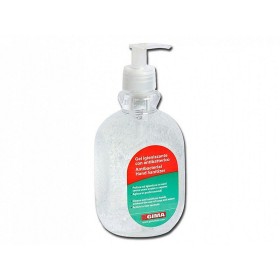LH incolore 70 1.000 ml
Soluzione idroalcolica a base di Benzalconio cloruro per la disinfezione della cute integra e superfici. Indicata per la disinfezione della cute integra e delle mani del personale sanitario e per la disinfezione di superfici pulite dure, piani di lavoro arredi, maniglie, attrezzature, servizi igienici in ospedali, cliniche, case di riposo, uffici, scuole, negozi, mezzi di trasporto etc.
Presidio Medico-Chirurgico Reg. n 18668 del Ministero della Salute
Ingredienti:
con carta di credito, Paypal e bonifico bancario.
con corrieri Poste, BRT, e FedEx
via Whatsapp +39.371.43.61.201
Soluzione idroalcolica a base di Benzalconio cloruro per la disinfezione della cute integra e superfici. Indicata per la disinfezione della cute integra e delle mani del personale sanitario e per la disinfezione di superfici pulite dure, piani di lavoro arredi, maniglie, attrezzature, servizi igienici in ospedali, cliniche, case di riposo, uffici, scuole, negozi, mezzi di trasporto etc.
Presidio Medico-Chirurgico Reg. n 18668 del Ministero della Salute
Ingredienti:
- Benzalconio Cloruro 0.30 %
- Alcool etilico 60.0 % *
- Coformulanti ed acqua depurata q.b. a 100 %
*Equivalenti a 67% v/v di alcool etilico.
Caratteristiche del prodotto:
Soluzione idroalcolica a base di Benzalconio cloruro per la disinfezione della cute integra e superfici.
- Aspetto: Liquido limpido incolore
- Odore: Agrumato
- pH: 8.00 ± 0.50
Campi d'impiego:
LH INCOLORE 70 è una soluzione disinfettante indicata:
- Per la disinfezione della cute integra e delle mani del personale sanitario.
- Per la disinfezione di superfici pulite dure, piani di lavoro arredi, maniglie, attrezzature, servizi igienici in ospedali, cliniche, case di riposo, uffici, scuole, negozi, mezzi di trasporto etc.
Modalità d'uso:
Per le superfici
- Spruzzare il prodotto sulla superficie preventivamente pulita da trattare comprendendola in modo uniforme. Lasciare agire almeno 1 minuto fino a completa asciugatura.
Per la cute
- Si impiega puro, senza diluizione, applicandolo con garza o ovatta o tramite nebulizzatore. Lasciare agire per almeno 1 minuto. Se necessario, ripetere l’operazione.
Meccanismo d'azione:
La superficie più esterna delle cellule batteriche, generalmente, ha una carica negativa, spesso stabilizzata da cationi bivalenti come Mg2+ e Ca2+. Spesso, gli antimicrobici cationici richiedono solo una forte carica positiva insieme con una regione idrofobica al fine d’interagire con la superficie cellulare e integrarsi con la membrana citoplasmatica. Tale integrazione all’interno della membrana è sufficiente a perturbarne la crescita e ai livelli di trattamento associati con le formulazioni disinfettanti e antisettiche è sufficiente a causarne la perdita di fluidità con conseguente morte della cellula. Il modo d’azione dei composti d’ammonio quaternario contro le cellule batteriche è scoperto coinvolgere una generale perturbazione del doppio strato lipidico che costituisce la membrana citoplasmatica batterica e la membrana più esterna dei batteri gram-negativi. Tale azione porta a una generalizzata e progressiva liberazione di materiale citoplasmatico verso l’ambiente esterno.
Il modo principale di azione microbicida dell’alcool è legato alla sua azione coagulante/denaturante nei confronti delle proteine. La coagulazione delle proteine indotta dall’alcool coinvolge la membrana cellulare, la membrana citoplasmatica e le varie proteine del plasma. La coagulazione delle proteine enzimatiche porta ad una perdita delle funzioni cellulari. Gli alcoli prendono di mira la membrana cellulare batterica con la risultante lisi e rilascio dei contenuti cellulari.











